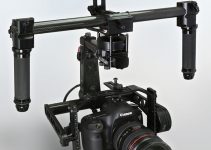It’s always great if you can learn from the best, and one of the best things about filmmaking is a lot of the tricks that filmmakers use can be determined by closely examining their work. Today, with big-budget blockbusters you might even get some well-produced behind-the-scenes footage that reveal a lot more of the process.
One of the most well-known filmmakers today is Christopher Nolan with his massive productions combined with often difficult to understand plots. His latest film was Tenet and he once again took things up a notch with incredible action-filled set pieces. Screen Rant has a list of BTS secrets from the production of Tenet that at the very least you will enjoy and at best maybe learn something to apply to your next production.
Warning: Spoilers Ahead!
Time and how it works was a major facet of Tenet’s story, and that meant there were some wild sequences and effects that needed to be pulled off. Plus there was plenty of Nolan flair. Here’s how he pulled off some of the most notable parts of production.
1. Practical Effects
When possible, Nolan tried to use practical effects as much as possible. The biggest being that they literally crashed a 747 into an airplane hangar. Like for real bought a plane to crash it. It looks amazing and real because it was and once again shows how practical effects are still perhaps the best way to do it.
The film actually has fewer VFX shots than a run-of-the-mill film. One insane aspect of Tenet was that inverted scenes had to be filmed twice – once in regular time and once with them acting backwards.
Of course, practical effects cost a ton of money.
2. The Car Chase
Second to the plane crash, there is a lengthy car chase sequence in the film. This was another effect done practically. Twenty of the best stunt drivers were there to pull off the car moves, including driving backwards.
Still, even with a massive production even Robert Pattinson had to get behind the wheel when a full-size IMAX camera was strapped to the front of the car. Safety first everyone, maybe don’t try this at home.
3. Final Battle
In terms of scale, the final battle was one of the bigger scenes. The team found a ghost town to shoot in and actually built buildings to be destroyed. They then had hundreds of ex-military extras come in to make sure the sequence was executed well.
The reasons for this included the demands of being an extra since they were working long days in full military gear in the heat and that they were playing military operatives.
4. Miniatures
Not everything could be executed at full size. In these cases Nolan relied on miniatures and a little VFX work for finish the job. Miniatures can work wonders if you can’t actually get the huge set and effects you want.
5. Acting Backwards
An incredible note from the actors is that they actually had to pull off tons of the scenes while acting backwards. This meant everything from the talking to the actions were done backwards to make it work. Especially impressive considering some of the intense running sequences and that the villain, played by Kenneth Branagh, had to do this all with another accent. Wild.
6. The Dark Knight
Maybe not the best example, but Christopher Nolan did pull on experience and connections from his time on the Batman trilogy to execute some scenes in Tenet. He even put in some stuff he wasn’t able to use, such as the black-and-yellow patterning he used on a boat in the movie and wanted to use in Batman.
Pull from your history when you can.
7. The Mega Yacht
One of the most expensive assets on set was the mega yacht. Use of the yacht actually required insurance for $100 million dollars. Not much to learn here except for making sure you have insurance where you can.
8. James Bond
Continuing on the yacht, the reason it was in the movie was to allude to a classic James Bond villain. I have to say it does work to do that. Nolan was also inspired by the history of James Bond and makes more than a few references to Bond throughout the film. But, Nolan made sure to build his film on his inspiration and the feeling of a Bond film as opposed to super direct homages.
9. The Score
Hampered by COVID-19 like all things in the past year, Nolan was fortunate enough that much of production was done. Unfortunately, the score had a ways to go. This meant many musicians who would’ve been part of an orchestral score had to record at home and send in their audio.
Beyond the score being classic Nolan, if you pay attention during the inverted scenes you can hear that the score has also been reversed to complete the effect. Everything plays a part in making the film feel right.
Another fun fact is that Nolan’s own breathing was sampled and effected for use in the scoring of the film as an effect.
10. Elizabeth Debicki
One thing filmmakers want to do is cast the perfect actor for each role. One way to ensure this is to write the part with a specific actor in mind. Elizabeth Debicki had the role tailor-made for her and it absolutely helped guarantee a perfectly suited performance.
11. Science
Even when going way outside the realm of realistic science, by basing the world of the film on some sensible scientific principles you can ground it in reality and give it a gritty feel. Nolan actually had physicist Kip Thorne read over the script to give advice on how the fictional ideas might play out in a realistic way.
12. Merry Go Round
And as a final fun fact, the original name for the film was going to be Merry Go Round, which actually makes sense in a way. I personally prefer Tenet.
Do you have any fun BTS info to share about Tenet or any other movie? Learn anything here you might want to try in your next project? Sure, we may not have the $200 million budget, but some of this can scale down.
[source: Screen Rant]
Disclaimer: As an Amazon Associate partner and participant in B&H and Adorama Affiliate programmes, we earn a small comission from each purchase made through the affiliate links listed above at no additional cost to you.



